Whether you’re looking for a way to enjoy the outdoors with family and friends or just want to have an in-house fire pit that will make your house feel more inviting, this blog post is all about how to build your own in-ground fire pit. This blog post will discuss what materials are needed, where you should place them on your property, and why building an in-ground fire pit can be a great investment.
Making An In-Ground Fire Pit Plan
We constructed our in-ground fire pit with a patio surround, so the same procedures should be followed for building a paver patio. Check out the How to Design and Construct a Paver Patio guide for more information on laying out stone pattern patterns. Traditional retaining wall blocks and kits may be used to construct a variety of fire pits. If you’re searching for ideas on how to make fire pits, check out our collection of Fire Pit Ideas.
We used cast patio pavers to construct our pit, which gives it the appearance of the stone. The paver blocks are the same size and shape, and they can be easily interchanged to create a natural appearance. The patio will rest on the ground, and the pit’s depth will be determined by your patio stones and concrete block construction.
This in-ground fire pit has a variety of layers to the installation.
- At the edge of the fire pit ring, a 2-inch layer of paver base was laid.
- A concrete ring is built on top of the paver base with concrete blocks.
- Behind the blocks, there should be at least 4 to 6 inches of paver base.
- A 1-inch layer of leveling sand should be used.
- Patio stones were used. The interior edge of the patio stones was reinforced with concrete and mortar, while polymeric sand filled in the gaps.
Select A Place
- Choose a site outside your house and beneath low-hanging limbs or anything else that could catch fire. Also, check to see whether it’s a location that will get water.
- Make sure there’s enough space around the fire pit for outdoor furniture. Keep the back legs of furniture at least 6 to 7 feet away from the pit.
- For simplicity, you may want to put your fire pit near where you’ll keep the wood.
Set The Paver Base In Place
A compacted gravel base combined with sand will allow you to build a solid foundation for the pavers that will surround your fire pit.
Instructions
Step 1
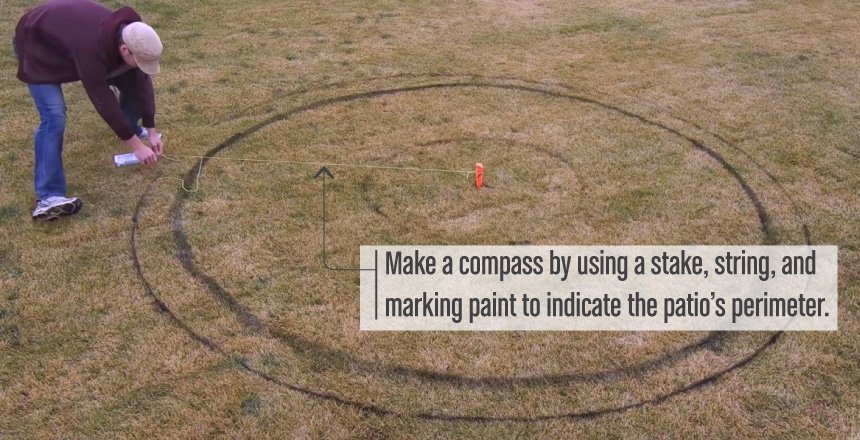 Layout the fire pit according to your preferences. You may make a compass by using a stake, string, and marking paint to indicate the patio’s perimeter.
Layout the fire pit according to your preferences. You may make a compass by using a stake, string, and marking paint to indicate the patio’s perimeter.
Step 2
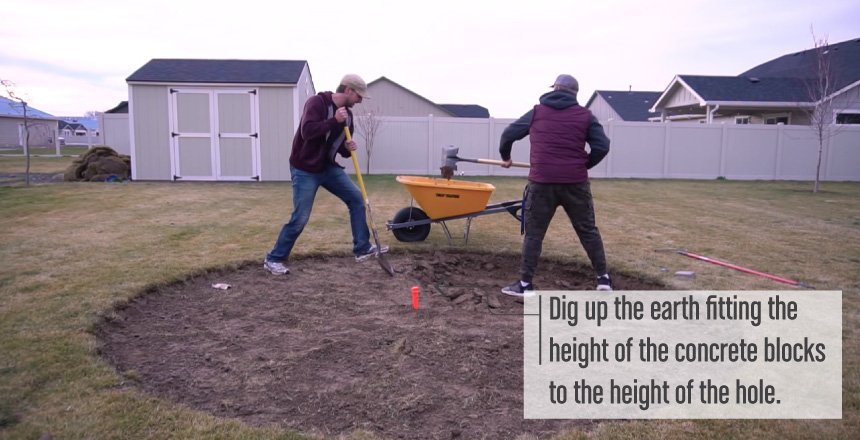 Create a fire pit in your yard by digging up the earth. To fit the height of the concrete blocks, the actual fire pit will be more profound than the patio surround. You don’t have to get the ring perfectly circular; it can also be filled with dirt or a paver base behind the blocks.
Create a fire pit in your yard by digging up the earth. To fit the height of the concrete blocks, the actual fire pit will be more profound than the patio surround. You don’t have to get the ring perfectly circular; it can also be filled with dirt or a paver base behind the blocks.
Step 3
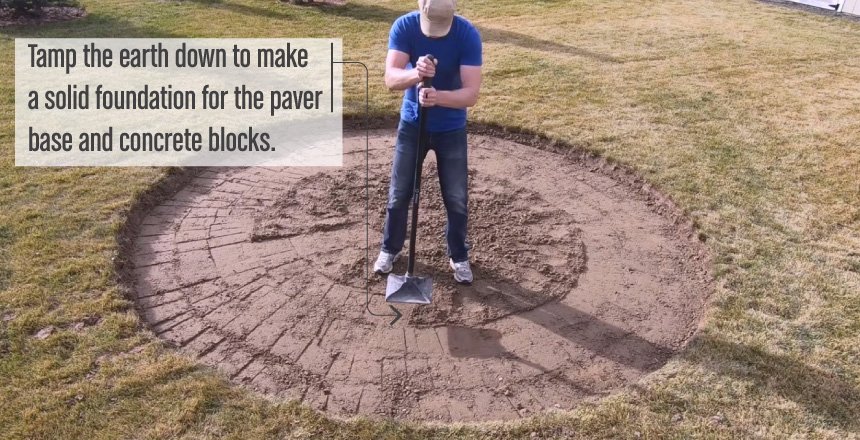 Using a water hose, moisten the ground. Tamp the earth down to make a solid foundation for the paver base and concrete blocks. To prevent the pit from filling up with rainwater, add a drain at this time. Please attach it to an existing drain or run the drainpipe into a low-lying area of your yard, drainage ditch, or tie it into one (this is best left to a professional).
Using a water hose, moisten the ground. Tamp the earth down to make a solid foundation for the paver base and concrete blocks. To prevent the pit from filling up with rainwater, add a drain at this time. Please attach it to an existing drain or run the drainpipe into a low-lying area of your yard, drainage ditch, or tie it into one (this is best left to a professional).
Step 4
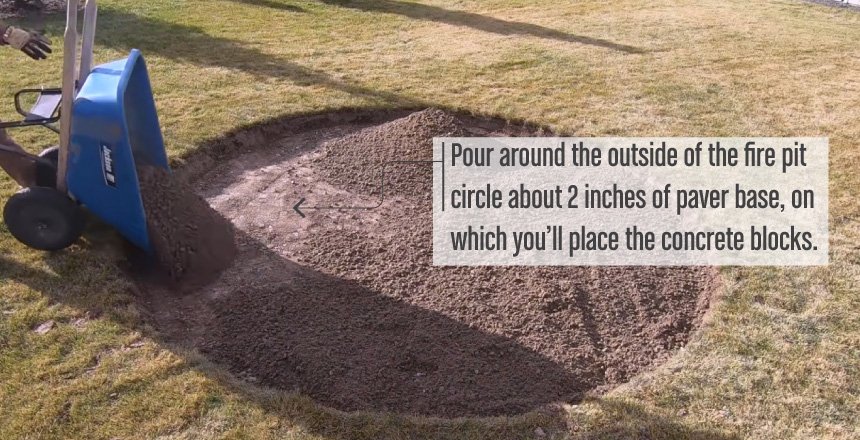 Pour around the outside of the fire pit circle about 2 inches of paver base, on which you’ll place the concrete blocks. Using a trowel to wet the surface before laying the concrete blocks on top will allow for a more even, professional finish. To ensure that the blocks are properly aligned and touching, they should be level and flush. Remove any damaged blocks. If necessary, level the blocks with a few minor additions or removals of the paver base.
Pour around the outside of the fire pit circle about 2 inches of paver base, on which you’ll place the concrete blocks. Using a trowel to wet the surface before laying the concrete blocks on top will allow for a more even, professional finish. To ensure that the blocks are properly aligned and touching, they should be level and flush. Remove any damaged blocks. If necessary, level the blocks with a few minor additions or removals of the paver base.
Step 5
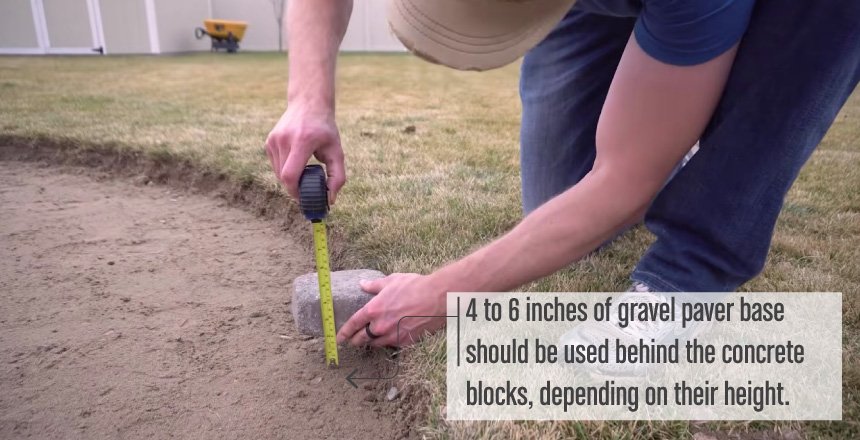 4 to 6 inches of gravel paver base should be used behind the concrete blocks, depending on their height. To begin, add the paver base 2 to 3 inches at a time and spread it out equally with a garden rake.
4 to 6 inches of gravel paver base should be used behind the concrete blocks, depending on their height. To begin, add the paver base 2 to 3 inches at a time and spread it out equally with a garden rake.
Step 6
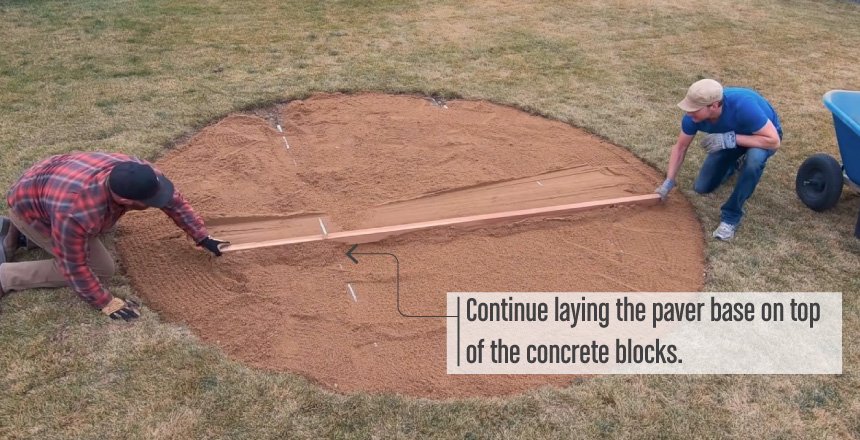 Tamp the paver base after it has been dampened. Continue laying the paver base on top of the concrete blocks, approximately 1 inch below their tops. Fill in the gaps between the concrete block units with paver base or gravel. Check for a level surface.
Tamp the paver base after it has been dampened. Continue laying the paver base on top of the concrete blocks, approximately 1 inch below their tops. Fill in the gaps between the concrete block units with paver base or gravel. Check for a level surface.
Step 7
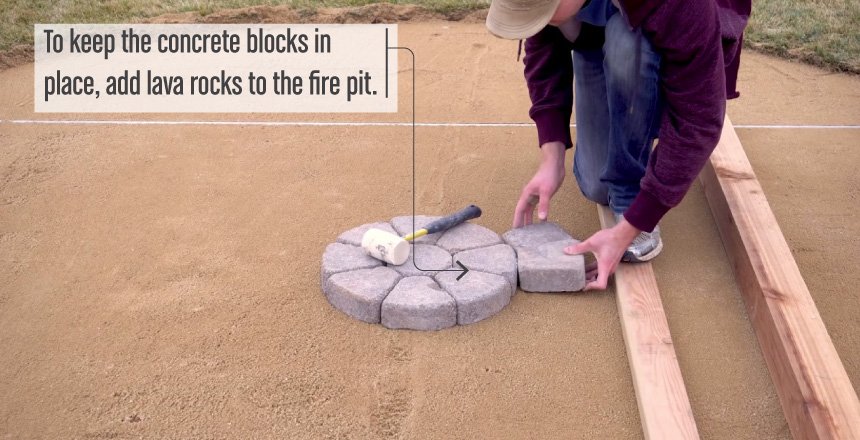 To keep the concrete blocks in place, add lava rocks to the fire pit.
To keep the concrete blocks in place, add lava rocks to the fire pit.
Step 8
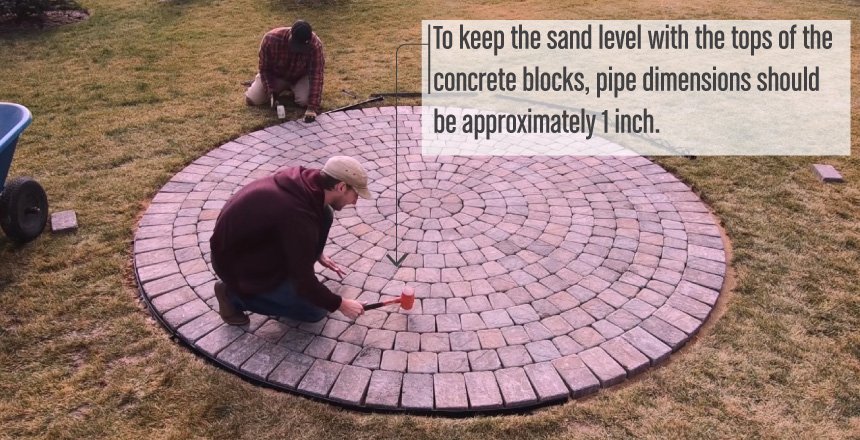 Cover the gravel paver base with PVC pipes. To keep the sand level with the tops of the concrete blocks, pipe dimensions should be approximately 1 inch.
Cover the gravel paver base with PVC pipes. To keep the sand level with the tops of the concrete blocks, pipe dimensions should be approximately 1 inch.
Step 9
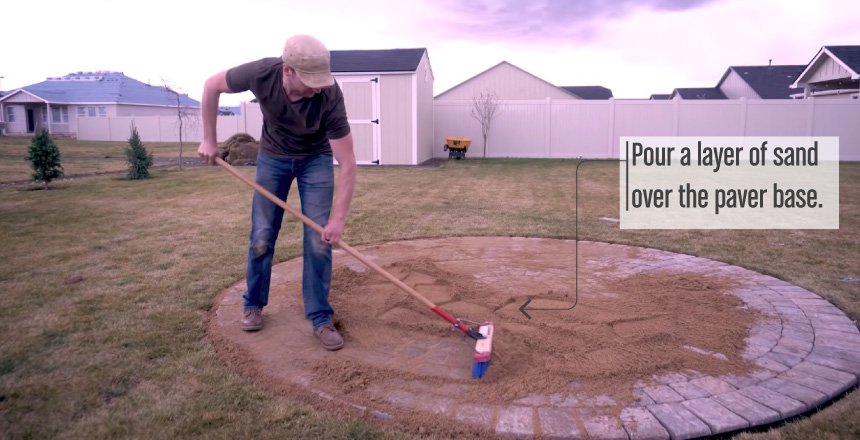 Pour a layer of sand over the paver base and PVC pipes. Cover the concrete blocks with something.
Pour a layer of sand over the paver base and PVC pipes. Cover the concrete blocks with something.
Step 10
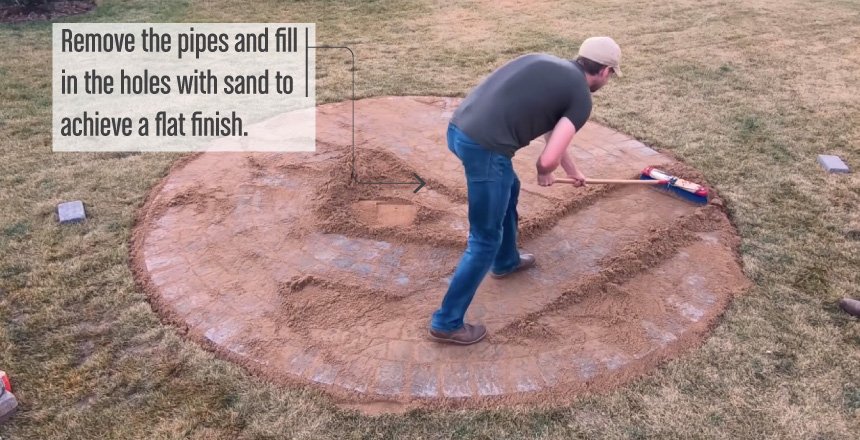 To finish the surface, screed it with a straight 2 x 4. Remove the pipes and fill in the holes with sand to achieve a flat finish. Make sure the surface is flat before moving on.
To finish the surface, screed it with a straight 2 x 4. Remove the pipes and fill in the holes with sand to achieve a flat finish. Make sure the surface is flat before moving on.
Install The Pavers
You can now start laying the pavers with the paver base in place and level and sand.
Instructions
Step 1
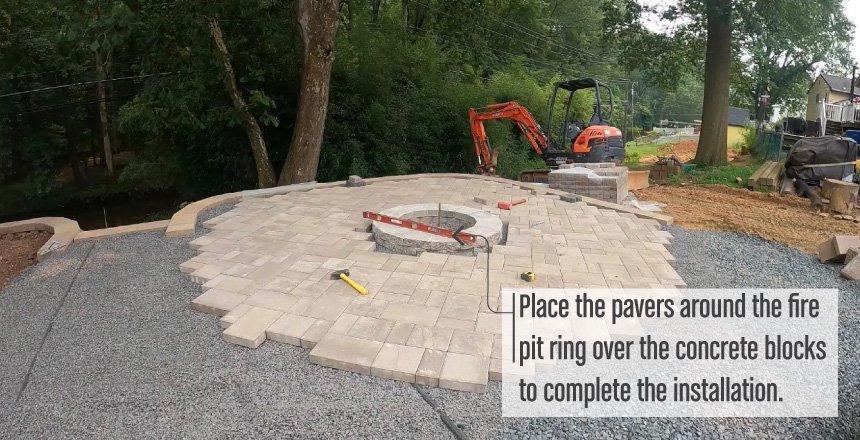 Place the pavers around the fire pit ring over the concrete blocks to complete the installation. Kneel on top of the sand with a panel of plywood. The joints between the pavers should be at least 1/2 inch wide to allow enough space for the polymeric sand that will be applied later.
Place the pavers around the fire pit ring over the concrete blocks to complete the installation. Kneel on top of the sand with a panel of plywood. The joints between the pavers should be at least 1/2 inch wide to allow enough space for the polymeric sand that will be applied later.
Step 2
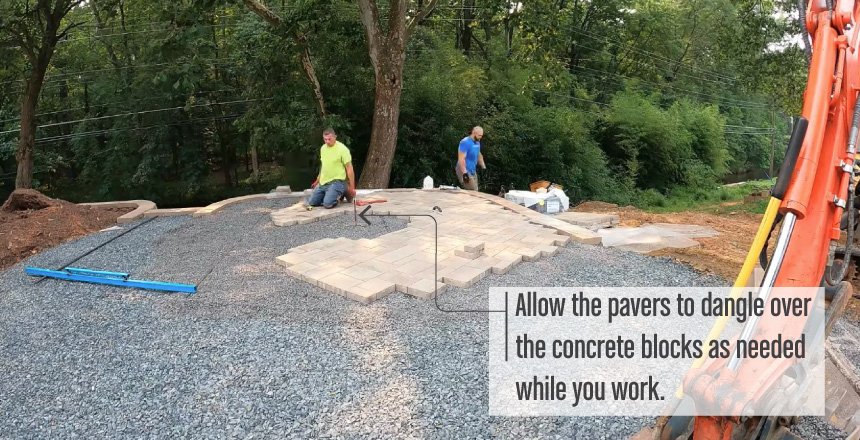 Allow the pavers to dangle over the concrete blocks as needed while you work. Examine the installation location to determine how many anchor bolts you’ll need. If necessary, mark any extra and cut with a circular saw with a concrete blade. The pavers should be cut approximately one to two inches short of the block’s edge.
Allow the pavers to dangle over the concrete blocks as needed while you work. Examine the installation location to determine how many anchor bolts you’ll need. If necessary, mark any extra and cut with a circular saw with a concrete blade. The pavers should be cut approximately one to two inches short of the block’s edge.
Step 3
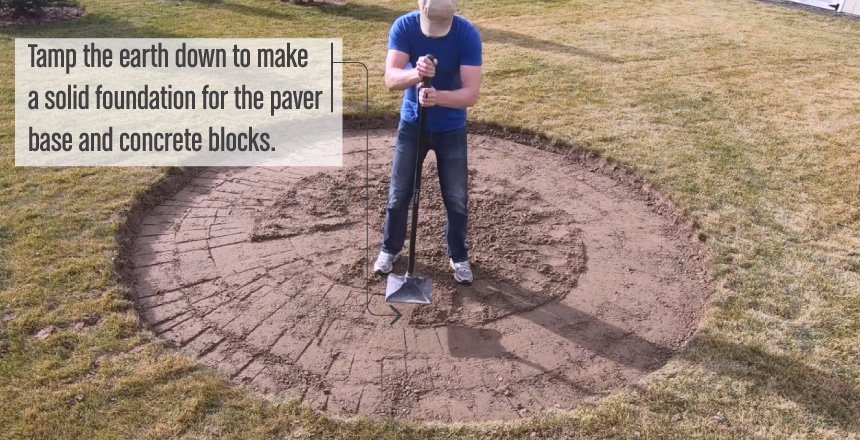 Continue to install the pavers. Change the paver’s direction to give them a more natural look. There should be many options for how the pavers can be connected. Leave at least a 1/2-inch gap between the pieces.
Continue to install the pavers. Change the paver’s direction to give them a more natural look. There should be many options for how the pavers can be connected. Leave at least a 1/2-inch gap between the pieces.
Step 4
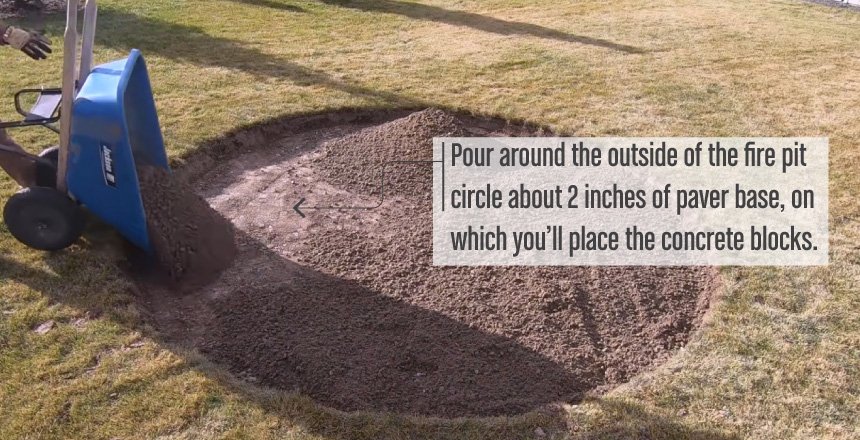 When you reach the patio’s exterior border, you’ll almost certainly need to chop the pavers again. To form a circular sitting arrangement, drive a stake into the fire pit’s center — avoid damaging your drain if you put one in. To make a compass, attach a string and a pencil to the top of the stake. Over the outer pavers, draw a curved line.
When you reach the patio’s exterior border, you’ll almost certainly need to chop the pavers again. To form a circular sitting arrangement, drive a stake into the fire pit’s center — avoid damaging your drain if you put one in. To make a compass, attach a string and a pencil to the top of the stake. Over the outer pavers, draw a curved line.
Step 5
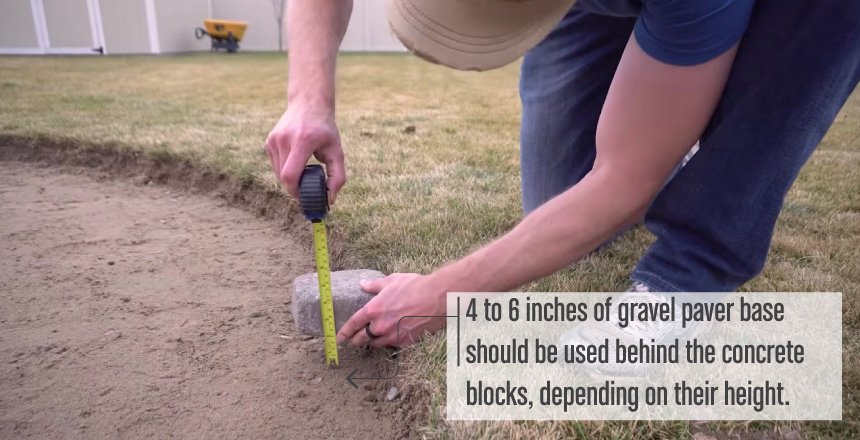 Create relief cuts up to the marked curve to cut the pavers. Cuts made for the relief are several initial cuts leading up to the curve to avoid saw blade binding. Finally, cut the curve.
Create relief cuts up to the marked curve to cut the pavers. Cuts made for the relief are several initial cuts leading up to the curve to avoid saw blade binding. Finally, cut the curve.
Step 6
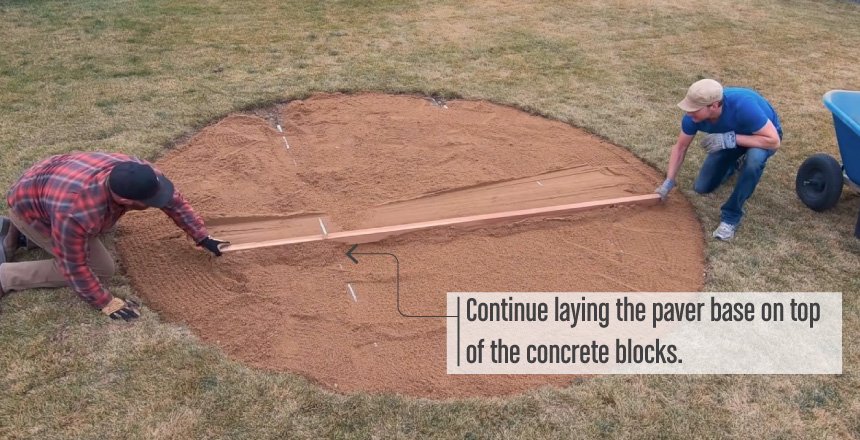 Replace the pavers after being cut and use a level to ensure that the surfaces are flat. Make sure it’s not too tight or loose, and then make any required adjustments.
Replace the pavers after being cut and use a level to ensure that the surfaces are flat. Make sure it’s not too tight or loose, and then make any required adjustments.
Step 7
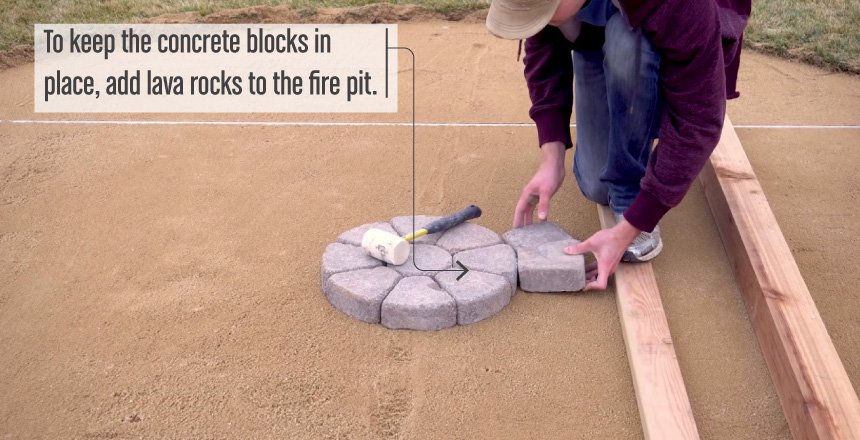 Follow the manufacturer’s instructions for mixing mortar and troweling it over the edges of concrete blocks and pavers. This will keep the fire pit’s insides in place. You may keep the paver edges clean by taping them with painter’s tape before laying the mortar.
Follow the manufacturer’s instructions for mixing mortar and troweling it over the edges of concrete blocks and pavers. This will keep the fire pit’s insides in place. You may keep the paver edges clean by taping them with painter’s tape before laying the mortar.
Step 8
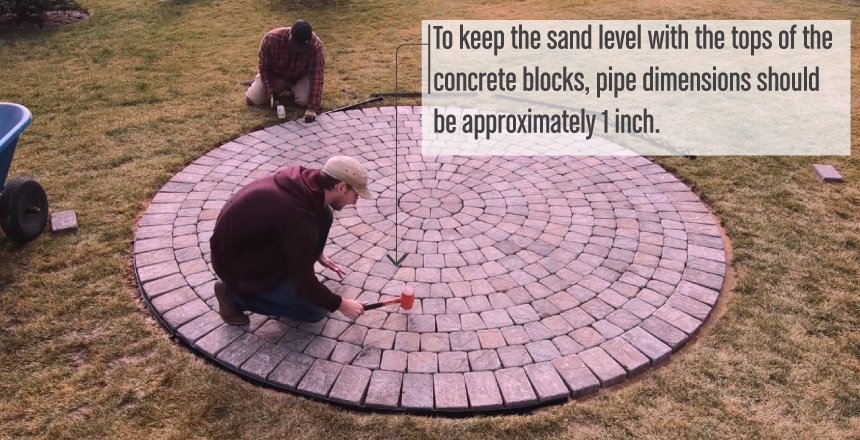 To keep the outside edge of the pavers in place, add edging along the patio’s perimeter with landscape spikes.
To keep the outside edge of the pavers in place, add edging along the patio’s perimeter with landscape spikes.
Add The Polymeric Sand
After the pavers have been laid, add polymeric sand to the mixture to keep them in place.
Instructions
Step 1
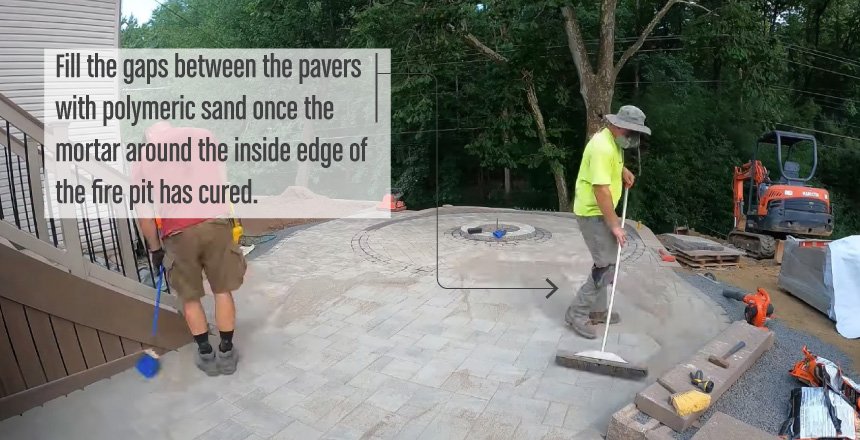 Fill the gaps between the pavers with polymeric sand once the mortar around the inside edge of the fire pit has cured. — Nitrile offers a more flexible design than Nomex, which has additives that make the connection tighter.
Fill the gaps between the pavers with polymeric sand once the mortar around the inside edge of the fire pit has cured. — Nitrile offers a more flexible design than Nomex, which has additives that make the connection tighter.
Step 2
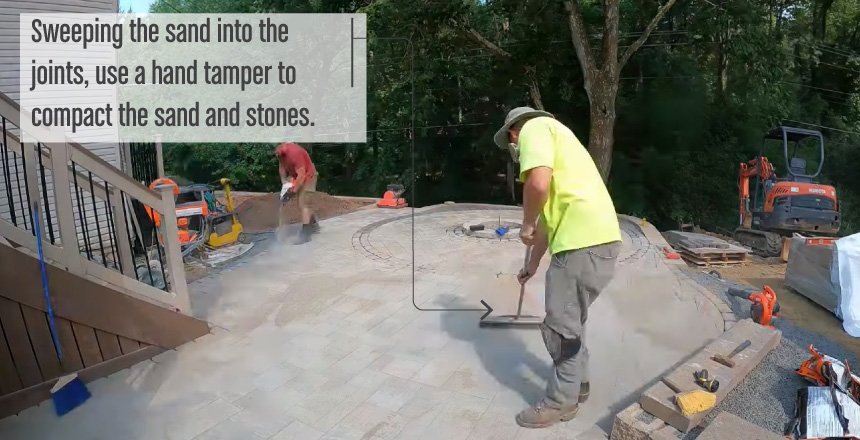 After sweeping the sand into the joints, use a hand tamper to compact the sand and stones.
After sweeping the sand into the joints, use a hand tamper to compact the sand and stones.
Step 3
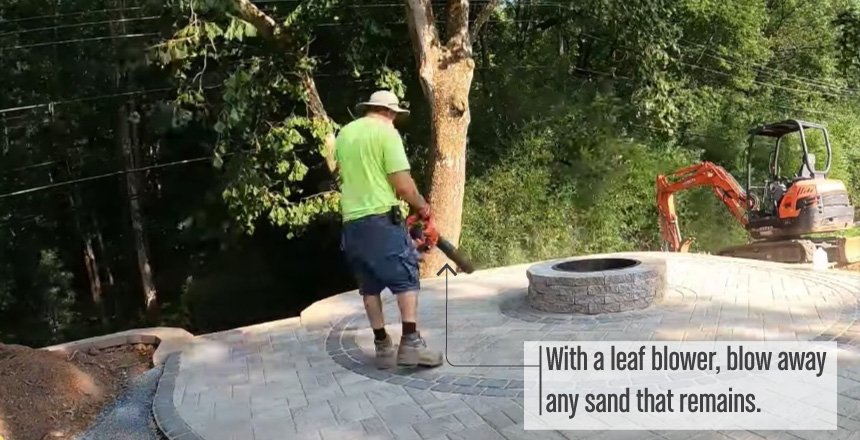 With a leaf blower, blow away any sand that remains. When utilizing polymeric sand, it’s critical to remove any extra. Excess water will cause hazing and alter the color of the blocks.
With a leaf blower, blow away any sand that remains. When utilizing polymeric sand, it’s critical to remove any extra. Excess water will cause hazing and alter the color of the blocks.
Step 4
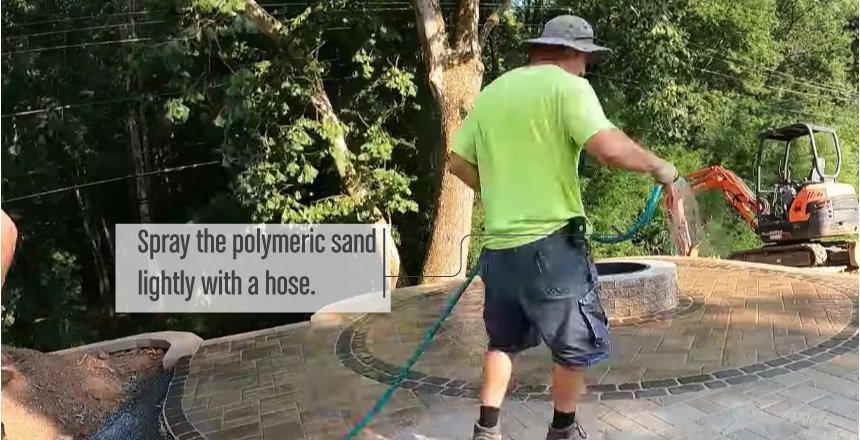 Spray the polymeric sand lightly with a hose. You can’t just expect blocks to sit in place. Because the sand may settle between them, you may need to reapply many times.
Spray the polymeric sand lightly with a hose. You can’t just expect blocks to sit in place. Because the sand may settle between them, you may need to reapply many times.
Step 5
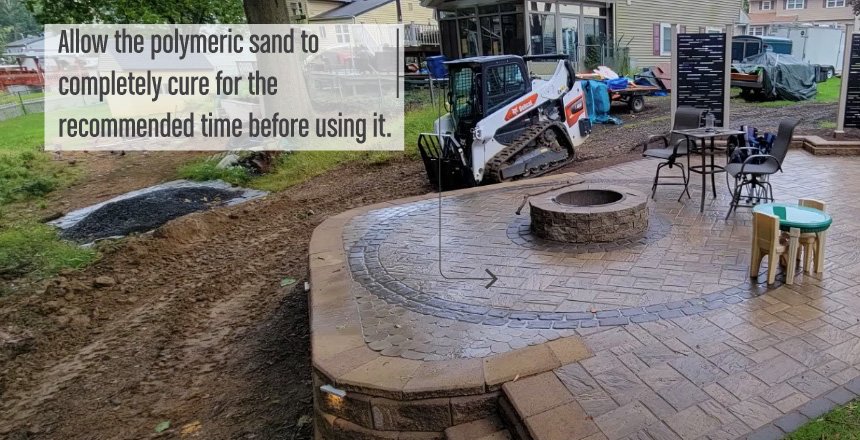 Allow the polymeric sand to completely cure for the recommended time before using it. If you want a more natural look, line the outside of your patio with river pebbles or dirt and grass seed.
Allow the polymeric sand to completely cure for the recommended time before using it. If you want a more natural look, line the outside of your patio with river pebbles or dirt and grass seed.
Step 6
 Enjoy the warmth of a backyard fire surrounded by relaxing furniture while listening to the ringing crackle!
Enjoy the warmth of a backyard fire surrounded by relaxing furniture while listening to the ringing crackle!
Frequently Asked Questions(FAQs)
How deep should a inground fire pit be?
The depth of your fire pit is determined by what you want and how committed you are to the endeavor. For example, if you simply want a basic fire pit, dig 6 to 8 inches down and call it good. If you wish to go deeper, be careful not to make the hole so big that you can’t enjoy the fire.
How to Choose a Fire Pit Mat For A Wood Deck
10 Best Wood Burning Firepits

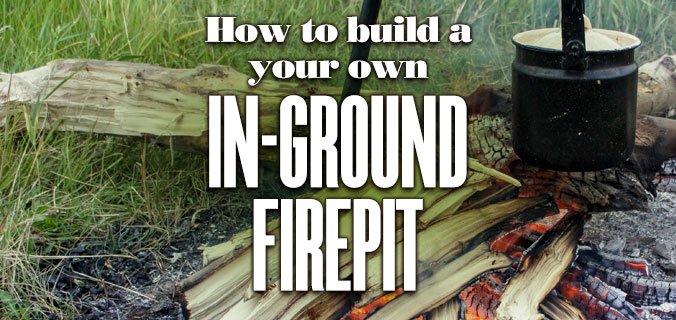


Comments are closed.